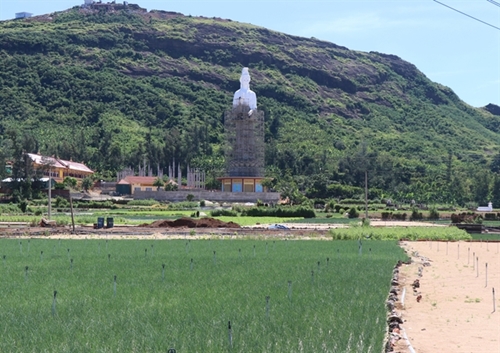The system is expected to collect one million cubic meters of rainwater per year with a fund of 250 billion VND (10.6 million USD).
Vo Quoc Hung, deputy director of the department, said last week that the technical plan would be proposed to the Quang Ngai People’s Committee in the next few months.
Under the plan, of the one million cubic meters of water, 600,000cu.m will be used for agricultural work, and the remaining will be used for daily life and tourism activities on Ly Son Island.
    |
 |
|
A garlic field on Ly Son Island (Photo: vietnamnews) |
Ly Son island district now has Thoi Loi water reservoir, two concentrated water supply works and 2,149 wells.
Thoi Loi reservoir was built in 2012 with a capacity of about 270,000cu.m.
In recent years, Ly Son district has faced a serious shortage of fresh water.
The main reason is that groundwater on the island is over-exploited to grow onions and garlic.
The province’s statistics show that, with an area of only 10sq.m, Ly Son island district has a density of freshwater wells up to more than 210 wells per square kilometer.
These wells exploit nearly 22,000cu.m per day, mainly in the dry season, leading to freshwater resources decrease and saltwater intrusion.
It is estimated that the total amount of rainwater on the island is about nine million cubic meters per year.
If subtracting the amount of water infiltrating into the ground and evaporating, the remaining of about three million cubic meters will pour into the sea.
The proposed project will collect one-third of the rainwater, which will pour into the sea, equivalent to about one million cubic meters per year.
This is a feasible and less expensive option for the State and the people than the option of turning seawater into fresh water.
Source: VNA